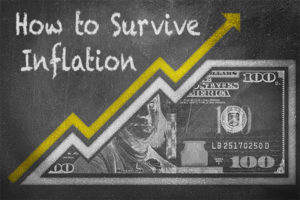HELOCs on the Rise: Why You Should Be Careful
Across America, home values are on the rise again, surging with the economy. With that surge, homeowners eager to scratch a pent-up-demand itch once again are taking out HELOCs, or home equity lines of credit.
Yes, at last, houses that spent much of the last decade underwater have begun to regain equity — that is, the spread between what a house is worth, and what is owed on it.
In the first quarter alone, homeowner equity rose by 7%, or $380 billion, according to the latest Mortgage Monitor report from Black Knight. That’s the single largest increase in any quarter since Black Knight began monitoring equity data in 2005.
There’s opportunity wrapped in temptation in houses flush with equity; as a result, applications for HELOCs have been on the rise. U.S. homeowners took out 347,875 HELOCs in the first quarter of 2018, a spike of 18% from the previous quarter, and 14% higher than the same quarter in 2017.
But taking out a HELOC, which allows the borrower to write checks against a percentage of the equity in his/her house (for any purpose) is not the same as spending the money.
Indeed, that same Black Knight report also indicates homeowners with mortgages withdrew only $63 billion in equity, whether by cash-outs or HELOCs, a 7% decline from the last quarter of 2017. Some of this has to do with the rise in interest rates fueled by recent Federal Reserve hikes in the prime rate, as well as upward pressure on the feds’ 10-year treasury note, which has been threatening to top 3%.
We’d like to think those holding, but not using, HELOCs are being prudent in addition to interest-rate sensitive, which is a wise course of action.
If you’re thinking of joining the parade of borrowers tapping their home’s equity, here are some things to think about.
Interest Rates are Also Rising
HELOCs generally have variable interest rates. That is, they rise and fall with a benchmark rate, usually the Fed funds rate, plus a margin set by the lender. As interest rates rise — every new meeting of the Federal Reserve governors seems to bring a quarter-point hike — so will your payment.
Before committing to a loan, make sure you know the maximum possible interest rate and be sure you can tolerate its implications.
If you abhor uncertainty, you might consider a straight-up home equity loan with a fixed rate, as opposed to a line of credit. The price of that certainty, usually, is a slightly higher interest rate than the starter rate on a HELOC, the same dynamic that exists between fixed-rate and adjustable-rate mortgages.
Still, it’s hard not to love this introductory portion of many HELOCs: a prolonged period, up to 10 years, when borrowers are required to make only interest payments on their loans. Beware: Beyond this grace period, HELOCs require principle and interest payments, causing payments to spike dramatically.
If you have not budgeted for this surge, your home is at risk for foreclosure. The best idea: During the interest-only phase of payments, make certain you’re kicking in an extra chunk that’s as healthy as your budget will allow to trim the principle.
The Downside of Debt Consolidation via HELOC
If you’re paying high interest rates on credit cards and the balances seem unmanageable, you might be tempted to consolidate your debt with home equity. We get that.
Again, be careful. Besides lower rates, HELOCs tend to invite you to stretch your repayment over an extended period, up to 30 years. If you go the distance, you’re likely to end up paying far more to get out from under your debt than if you considered other options, such as a part-time job, something on the side in the gig economy, an unsecured personal loan, or — if you’re really in over your head — checking in with a nonprofit debt-counseling service.
Consult a debt consolidation calculator to discover your best options.
A word of caution: New rules limit the tax-deductibility of interest paid on HELOCs. Once, all HELOC interest was deductible; the tax act that went into effect in 2018 limits favorable status to improve your home: repairs, additions, upgrades. So, while neither the lender nor the IRS much cares how you spend your HELOC — take a big vacation, buy that luxury sedan, consolidate debt, or fund the heir apparent’s college education — if you’re not spending it on the house, you probably won’t be able to deduct the interest.
But even the home-improvement aspect has limitations. HELOC interest deductions are capped by the purchase price of your dwelling. This is a rare circumstance, of course, but if you’ve been living in a hot neighborhood for a long time and you decide on a HELOC for upgrades, your deductible interest will be limited by what you paid for your house, not what it’s worth now that all the cool kids moved in and pushed your equity sky high.
You Can Get a HELOC with a Lower Credit Score
HELOCs are simple to establish — you don’t even need sterling credit; a 620 FICO score or thereabouts ought to do it — and pack modest annual fees, usually no more than $100.
As mentioned above, this is where opportunity meets temptation. Once you’ve been approved for your loan, accessing your home’s equity is as near as the HELOC checkbook. Do not, under any circumstances, come to look upon that source as a way to buy things or experiences your monthly income cannot cover.
This invitation to live beyond your means is a threat to your savings and your peace of mind. That Disney vacation you couldn’t afford before applying for a HELOC? You still can’t afford it.
Know Why You’re Borrowing
While it’s reassuring to know there’s the potential for a potful of lovely cash under your roof, it’s vital to have a plan if you’re going to pursue a HELOC.
For openers, understand why under some circumstances it’s better to go the HELOC route (smaller portions borrowed over time) vs. a home-equity loan (the entire bundle comes to you at once). HELOCs are good for recurring borrowing, such as helping your offspring through college. Home-equity loans are, even with their higher interest rates, probably a better bet if you’re redoing the kitchen or putting on a new roof.
And if you’re thinking of borrowing to take an extended cruise or a Las Vegas vacation … don’t. Really. Just don’t.
Home Equity and Retirement
Hopefully, your home is paid off or nearly paid off when you retire, which makes it a bank waiting to be robbed via a HELOC. There are circumstances where this make sense.
Using a HELOC to do the remodeling or repair work you’ve put off for years, is very practical. If it makes the house more livable for you – or more appealing should you decide to sell – then go for it!
If you’re really disciplined about how you spend your money in retirement, a HELOC can be helpful when you want to make a major purchase like a new car. Rather than take extra money out of retirement savings, which will count as taxable income, use a HELOC to cover the costs.
It might also be useful in a year when the market is down and the investments you would be cashing in have lost value. A HELOC can replace that money while you wait a year or two for the market to recover and your investment to regain its value.
Limit How Much Equity You Draw Down
Again, the availability of all that cash can be alluring. But unless you have abundant cash flow at the end of every month — and even then, really — you’ll want to resist tapping it for all but the most serious reasons.
If you must, then be exceedingly careful. Grabbing all that equity in a HELOC (or any other loan secured by your dwelling) puts you one major economic hiccup from going underwater … again. Demonstrate that you learned something from the Great Recession, OK?
When NOT to Pursue a HELOC
You know you’re a bad candidate for a HELOC if:
- Your income is unstable. If there’s a fair possibility your income may sink during the term of the loan, stay away. A small downturn in your fortunes could end up in foreclosure and you searching for another place to live.
- You cannot afford the upfront costs. Some of the same fees you paid when you took out your mortgage apply to HELOCs: application fee, title search, appraisal, attorney’s fees, and, possibly, points.
- You want to borrow only a small amount. Rather than put your house at risk, consider a low-APR credit card, perhaps one with a zero-interest introductory period.
- You can’t afford an interest-rate bump. Rare is the fixed-rate HELOC. Almost all HELOCs are variable rate loans. While the introductory rate can be attractive, if you cannot afford the maximum, you’re gambling with your family’s future.
- You’d like a HELOC to bridge the gap for day-to-day expenses, in anticipation of better times. Do not do this. Seriously. Again: The gig economy is your friend. Get a second job and forget about HELOCs.
Finally, a Few More Words of Caution
Clearly, if you’ve committed — or even partially committed — to pursuing a HELOC, you must shop. You must shop hard. You want the best interest rate to start, the best cap, the most flexible terms regarding repayment, the lowest fees, and so on.
When/if that magic moment arrives, and you’re about to sign onto the loan documents, read every last line. Do not depend on the loan officer to talk you through each page. That’s your autograph, not the lender’s representative, on the bottom line.
For instance, suppose you’re like the borrowers mentioned above who take out a HELOC but don’t plan to use it right away, if at all. You merely want it for emergency purposes. Nothing wrong with that. However, some lenders stipulate that a first draft — maybe $25,000 — comes with the approval of the program.
Yes, you can pay it back immediately, but it’s sort of a sneaky way to get you accustomed to tapping your equity.
And be aware that banks can freeze your HELOC account if certain “triggering events” occur such as a significant drop in the value of your home or a job loss that results in a big decline in your income. Two other warning signs banks might react to, are a big drop in your credit score or accumulating big debt.
Got all that? Good. One last time, and as we said at the top: Be careful — super careful — out there.
Sources:
- Trapasso, C. (2018, June 14) Homeowners Are Rushing to Get HELOCs — Should You Do It, Too? Retrieved from https://www.realtor.com/news/trends/homeowners-rushing-get-helocs-might-need-hurry/
- Ojha, R. (2018, July 9), HELOC Equity Withdrawals Hit a Low. Retrieved from https://dsnews.com/daily-dose/07-09-2018/heloc-equity-withdrawals-hit-low
- Fontinelle, A. (2017, Nov. 14) How a home equity line of credit (HELOC) can hurt you. Retrieved from https://www.investopedia.com/articles/mortgages-real-estate/11/helocs-can-hurt-you.asp
- Rae, D. (2018, March 16) How Do I Know If My Home Equity Loan Is Tax Deductible? Retrieved from https://www.forbes.com/sites/davidrae/2018/03/16/heloc-tax-deduction/#7f9148a94f99
- Fontinelle, A. (2018, June 7) 4 smart moves for using home equity. Retrieved from http://www.interest.com/home-equity/news/4-smart-moves-for-using-home-equity/
- NA (2018, July 23) HELOC: Understanding Home Equity Lines of Credit. Retrieved from https://www.nerdwallet.com/article/mortgages/heloc-home-equity-line-of-credit
- Hannon, K. (2016, April 13) Cautionary Advice On Getting A Home Equity Line. Retrieved from https://www.forbes.com/sites/nextavenue/2016/04/13/cautionary-advice-on-getting-a-home-equity-line/#2ac4f59166c


















